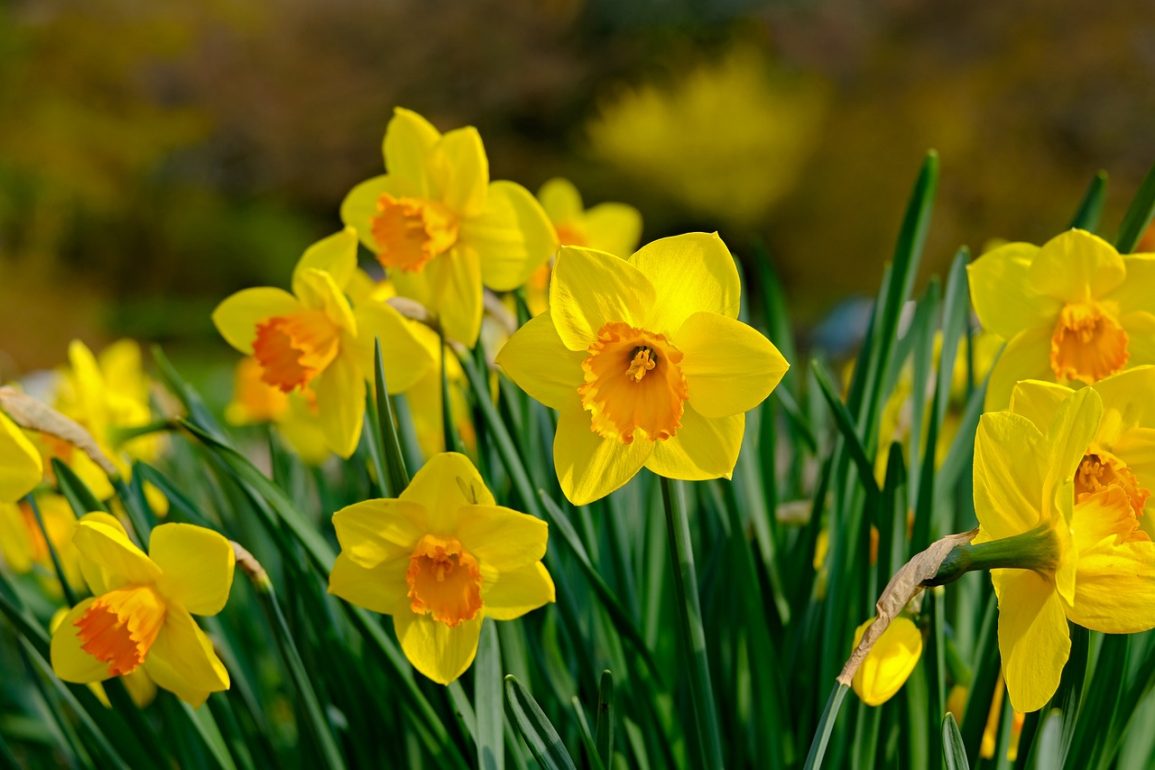Marching into Spring: Exploring the Symbolism and Significance of the Daffodil.
As we slowly transition into brighter mornings and bluer skies, during March we start to notice beautiful yellow Daffodils appearing abundantly reminding us of the magical joys that Spring has to offer.
The birth month flower of March is in fact the daffodil known for its vibrant yellow hue, though it can also appear in paler shades, including white and even pink.
Commonly found in places like Europe, North America, and Asia Daffodils thrive in mild weather and are often planted in gardens, parks, and roadsides as their vibrant and cheerful appearance, adds aesthetic appeal to outdoor spaces. There are 13,000 different Daffodil varieties and with the right drainage and sunlight, they can bloom up to 50 years in the same area. Daffodils are low-maintenance plants that thrive in various soil conditions and climates, making them easy to cultivate. They are known for their resilience and ability to naturalise, meaning they can multiply and spread easily over time, creating beautiful displays year after year without requiring much intervention. Therefore, a successful Daffodil field has un-mowed grass which is why hillsides and open spaces make a great place for these flowers to grow.
Symbolism and Meaning
Throughout history, the daffodil has been revered for its symbolism and significance. In many cultures, it is associated with rebirth, resurrection, and new beginnings.
Daffodils are also known as Narcissus. The origin of the name Narcissus comes from the Greek mythology where the river God named Narcissus fell in love with his own reflection. He starred at himself for too long that he ended up drowning and what remained at the place of his death were flowers that bloomed and were then named after him. This mythological tale serves as a metaphor for the fleeting beauty of life and the cyclical nature of existence.
In the language of flowers, the Daffodil carries a range of meanings, including hope, inspiration, and inner strength. It is often given as a gift to symbolise friendship, support, and encouragement during times of transition or adversity.
Daffodils became popular ornamental flowers in European gardens back in the 17th century. These beautiful flowers symbolise hope, renewal, friendship, and new beginnings not only here but around the world too. In China, daffodils usually bloom around Chinese New Year, so they are believed to symbolise luck, prosperity, and good fortune.
Cultural Significance
The Daffodil holds special significance in various cultural traditions and celebrations around the world. In Wales, it is the national flower and is associated with St. David’s Day, celebrated on March 1st. During this holiday, daffodils are proudly worn as a symbol of Welsh identity and pride.
In the United States, the Daffodil is the official flower of March, the month that marks the beginning of spring. It is also commonly associated with Easter, a Christian holiday that celebrates the resurrection of Jesus Christ and the triumph of life over death.
Symbolism of Abundance
Presenting Daffodils in a bunch symbolises abundance and generosity. It is thought that offering someone as a bunch it is meant to provide happiness. But, if they are only given as a single flower, it is meant to mean misfortune!
Giving and receiving Daffodils is a brilliant way to welcome the Spring season and say goodbye to the winter blues. These strong flowers manage to survive the harsh conditions winter challenges them with, but still manage to pop up every March showing their cheerful faces. Surprising someone with a bunch of Daffodils this Spring not only is a kind gesture but also shows that person that just like a Daffodil, strength and courage prevails.
Millennium Milli


